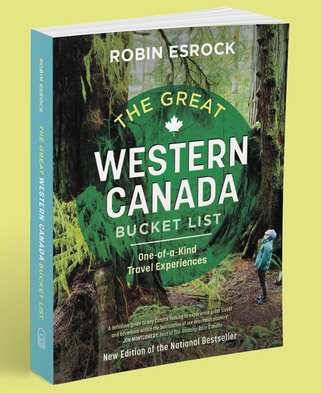|
Modern travellers have developed an insatiable thirst for jet fuel, much to the detriment of previous modes of travel: ships and trains. While ships have evolved into cruising palaces, trains have far more limitations when it comes to the size of their carriages. Yet as a means to discover a new destination in a comfortable, relaxing pace, I'm a sucker for an epic train journey. Sit back and watch the world pass you by as we track down the world’s best train journeys. The Blue Train It’s amazing how much comfort you can cram into a carriage rolling along a gauge just 3ft and 6 inches wide. South Africa’s Blue Train is rightly regarded as perhaps the world’s most luxurious rail journey. Butler service, en-suite soundproofed compartments (with gold tinted windows), double beds with down duvets, marble-tiled bathrooms (many with full bath tubs), panoramic observation lounges, gourmet meals – no wonder its known as a moving five star hotel. There are two trains in operation - one catering to 74 guests in 37 suites, the other for 58 guests in 29 suites – operating on the main scheduled route from the administrative capital of Pretoria to Cape Town. Travelling at 90 km/hr, enjoy 27 pampered hours and spectacular scenery until you reach your final station. The Blue Train also operates two other routes: to Durban, and to the malaria-free Pilansberg National Park. Maharajas Express Not to be outdone, India’s Maharajas Express treats its 88 passengers like royalty, literally in the case of the presidential suite, which spans a whole carriage. Recalling an era where India’s grand Maharajas built their own lines to shepherd them in lavish carriages, the Express combines old world luxury with modern conveniences like a business centre, spa and gym. It offers five itineraries, ranging from the seven night Heritage of India, Indian Splendor and Indian Panorama to the three night Treasures and Gems of India. All visit destinations like Jaipur, Ranthambore and Agra, to see the Taj Mahal. My own rail journeys in India (in packed, sticky 2nd Class Sleepers) were memorable, but not for the right reasons. If you’re willing to pay, oh, several thousand times more for a ticket, why not treat yourself like a king? The Canadian We live in a large country, but when I took the 4-night, 3-day VIA Rail Canadian from Vancouver to Toronto, I could finally see just how large we’re talking about. Travelling 4466km through the Rockies and Prairies, expect to roll through four time zones, not seeing any signs of civilization for hours. The train’s weekly configuration changes depending on demand, but always has panoramic and double-story panoramic dome cars, excellent meals, clean bathrooms, fun activities and friendly staff. Recalling the 1950’s glory years, the stainless steel carriages have the pastels and feel of another era, especially the rear Park Car, with its distinctive dome and view of the tracks you leave behind. Currently undergoing refurbishments as part of VIA Rail’s almost $1 billion investment, The Canadian is rightly a national treasure, popular with both locals and international visitors. The Venice Simplon Orient Express / Eastern and Oriental Express Although these are two separate train journeys exploring two different continents, I’ve put them together because the same company owns them, and once you hear the word “Orient”, it’s easy to get confused. More so since there was an actual train known as the Orient Express, running between Strasbourg and Vienna, but that ceased operation in 2009. The Venice-Simplon is a luxury train operating from London to Venice, in vintage carriages dating back to the 1920’s and 1930’s. Restored to their former glory, cabin suites are heavy on the polished wood, with washbasins, banquette sofas and ever-attentive stewards. Swap out Europe for lush jungles and exotic temples, and hop aboard the more modern The Eastern and Oriental Express, which journeys between Malaysia, Singapore, Thailand and Laos. With its in-suite bathrooms and airy teak observation cars, itineraries range from 2 to 6 nights, offering various opportunities for temple visits and other excursions. The Ghan With its vast distances and sparse population, Australia is tailor made for an epic train journey. The Ghan, named after the late 19th century Afghan cameleers that created the route, traverses almost 3000 kilometres north to south and vice-versa from Adelaide through Alice Springs to Darwin. The 3 day/2 night crossing caters to a range of budgets, from the twin Red Service Sleeper Cabins with their compact lounge chairs (folding into sleeping berths), to the 25 en-suite Platinum Cabins, with in-cabin dining, attentive stewards and twin or double beds. Beginning with the ridges and plains of South Australia, the landscape transforms into the red earth and sweeping skies of the Central Australian outback. Day or multi-day excursions are on offer from Alice Springs, before continuing into the more tropical regions of Northern Australia. The train runs twice a week in each direction June to August, and once a week during the remainder of the year. Qinghai–Tibet railway China boasts the world’s fastest passenger train, the CRH380A running from Shanghai to Nanjing and Hangzhou at an astonishing 480 km/hr. Think more rollercoaster and less leisurely train journey. For less of a blur but all the thrills, consider the Qinghai-Tibet, an engineering marvel that connects the city of Xining to Lhasa, Tibet. It’s the first railway to navigate the mountains and treacherous terrain that encompasses Tibet. Once you cross the Tanggula Pass at 5072 metres above sea level, you’re officially on the world’s highest railway, rolling through the world’s highest tunnel, and stopping at the world’s highest railway station. With stunning views across the mountains and permafrost, the journey is literally breathtaking. At this altitude, breathing can become an issue, but the cold-resistant carriages were built for such challenging environments, and carry oxygen supplies on board for each passenger, along with an onboard doctor. The Rocky Mountaineer Repeatedly named as one of the world’s great train journeys by everyone from National Geographic to Conde Nast Traveler, The Rocky Mountaineer belongs to North America’s largest private rail service, running 1000 km through some of the world’s best scenery. Unlike VIA’s Canadian, which continues onto Toronto, the Rocky Mountaineer is designed to showcase the glorious Rockies in all their glory, with guests seated in two-level glass-domed panoramic dome cars, while interpreters point out wildlife and sites of interest. Guests spend the night in the company’s hotel in Kamloops before continuing their journey from Banff/Jasper to Vancouver, or vice versa. Along with the outstanding meals, let the cocktails flow! The Trans-Siberia / Trans Mongolian Railway When creating this list, I erred on this side of luxury, only because I’ve spent many days travelling on some of the world’s more challenging train rides, and while the memories are precious, I wouldn’t necessarily wish them on my readers. Trains are great, but not when they’re scary, like the time I peed at gunpoint on the Russian-Mongolian border. It took me three weeks to journey from Beijing to St Petersburg on two of the world’s most legendary rail networks. Along the way I raced horses in Mongolia, swam in the world’s deepest lake, and was almost tasered by some corrupt cops. Rudimentary carriages were OK, even if the attendants were smuggling starched clothing in our pillows. Meals consisted of instant noodles, instant mash, and anything else we could whip up with graciously provided hot water. I grew to appreciate the sneer of the attendants, and the taste of vodka, which was cheap and plentiful. An incredible adventure, definitely. But not for everyone. El ChePe The Chihuahua al Pacifico Railroad, more affectionately known as El ChePe, carries locals and tourists over 400 miles through the Sierra Madre mountains and the magnificent Copper Canyon. Departing Los Mochis in the morning and arriving in Chihuahua late in the evening, the train crosses 36 bridges (one at over 1000 feet) and 87 tunnels. It stops at 13 stations along the way, allowing travellers to hop on and off to explore the region. There are two classes to choose from, with the Primero Express offering a dining car as opposed to the Economico’s snack bar, but it’s the scenery that provides the tastiest fodder. Mexico’s most scenic train chugs alongside stunning jungle, mountains, canyons waterfalls, and even high desert. The Royal Scotsman
The Scottish Highlands are yours for the taking. By yours, I refer to the 36 guests pampered in absolute luxury aboard the Royal Scotsman. The train offers 2 to 7 night itineraries that take in the majestic Highlands, along with themed trips like the 4-night Classic Whisky Journey in conjunction with the Scotch Malt Whisky Society. Enjoy gourmet bliss in the mahogany-panelled dining car, and make sure to pack a kilt for alternating formal nights (if you forget, you can still hire one). Twin, Double and Single cabins are equipped with in-suite bathrooms, with the plush sofas in the observation car perfect to watch quaint villages and medieval castles pass you by.
0 Comments
I awake at 5am, a blessed night of sleep after a 20-hour+ transit, eager to make my way downtown to participate in the Melbourne Marathon. Well, not the 42km marathon, but the 10km run part of it, my first. I book an Uber for the first time, which is a game-changer (as everyone knows), at least as far as the guy can drive me before the roads are cordoned off approaching Flinders St. My toes still feel the phantom nibbles of the grey rabbit that shared last night’s abode, a friend of a friend’s place, in a neighbourhood in northern Melbourne called Travencore. The rabbit’s name is Tanpopo. There is also a girl who stays up all night listening-watching Celine Dion on Youtube. She was awake listening-watching to Celine Dion when I crashed early at 8:30pm. She was awake listening-watching to Celine Dion on Youtube when I awoke at 5am. She says she is nocturnal.
Marathon start at 7am, shortly before battery dies
Flossing teeth during my first visit to Melbourne, 2005
Finishing line inside the MCG
This is Tanpopo
To find the best beaches, you usually have to get as far out of urban centres as possible. But some cities are blessed with amazing beaches of their own. These are cities with large populations, business, traffic – and long golden sandy stretches that make you feel like you’ve entered a holiday resort. Here’s my favourites: Ipanema, Rio de Janiero White sand and blue water frames Rio’s most famous neighbourhoods, Copacabana and Ipanema. While Copacabana enjoyed much of the world’s attention in the past, it has been surpassed by the energy of Ipanema. Ipanema Beach is signposted by the famous “postos” lifeguard stations, which helps find your way on a beach that is generally packed all year round. Stroll up, rent a chair and umbrella, and have your own beach waiter serve you cold beer, fresh fruit, and snacks throughout the day. Striking mountains rise further down the beach, and there’s usually a friendly game of volleyball on the go (or foot volleyball, which is terrific fun to watch). There’s also a parading flea market as polite vendors roll through selling bikinis, hats, and towels. With so much skin and beauty on display, it’s no wonder Ipanema is one of Rio’s most expensive neighbourhoods. An interesting note: topless bathing is prohibited. Photo: warrenski Clifton, Cape Town Cape Town is blessed with extraordinary natural beauty, and it’s best beaches are in the upmarket suburb of Clifton. Driving up from Sea Point, cars line the side of the road early, and parking is seldom easy. It’s a walk down the stairs until you hit the fine white sand. There are four beaches in Clifton, separated by rocks, and attracting different crowds. All four beaches are protected by rocks and spared the strong winds that blow through the city. As a teenager I used to walk between beaches to see where the action was. Today, the most popular beach is Fourth Beach, which has the calmest waves. First Beach gets the biggest waves and is popular with surfers. Third Beach is a popular gay hangout. Second beach continues to attract teenagers and students on the prowl for love. Capetonians and tourists soak up the sun, and since the water is a frisky 12-16C, a dip in the sea is truly refreshing. Bondi Beach, Sydney During my first visit to Bondi Beach, the temperature in Sydney cracked 50C. Bondi Beach, a beach that has spawned a hit TV series (Bondi Rescue) was absolutely chockers (full). The odd part was there was nigh an umbrella in sight, here in a country with one of the highest skin cancer rates in the world. Sydney is surrounded by fantastic beaches, but Bondi is its flagship. A perfect 1km crescent, reliable waves for surfing and body boarding, pubs, shops and cheap eats right across the road. It attracts the city’s most beautiful people, showing off their most beautiful bodies. With Sydney’s weather, there’s always people on the beach, with crowds picking up in the afternoon post work, and young couples pushing babies on the promenade. When people fall in love with Sydney, it’s usually Bondi on their mind. Photo: Wikimedia Kitsalano, Vancouver In the late 1990’s, my brother and I decided to immigrate to Vancouver. He went first, putting in his papers, without visiting the city first. I was working in England at the time, and the mountains, forests and beaches of British Columbia were very far away. I had a good job, and was second guessing Canada, until one day, my brother sent me an email with a picture from Kitsalano. He had found a two-bedroom apartment two blocks from the beach, and summer was in full swing. The subject was: Wish You Were Here. The sand wasn’t fine and white, but it was fine enough. People were stacked up against scattered logs. In this distance was a towering mountain, the tree tops of Stanley Park, and some of the apartment blocks of English Bay. Having grown up in a big, landlocked city, I couldn’t believe people could live in a city like this. I wished I was there too. Six months later, I arrived as an immigrant and beelined straight for Kitsalano. Photo: jenschapter 3 Waikiki Beach, Honolulu The surf is usually up at Waikiki Beach, once the playden of Hawaiian royalty, now a hotel and surfing mecca. Waikiki has attracted all the major hotel chains and serves as a centre of tourism in Hawaii, but lets not forget it’s also a terrific beach, with a great view of the striking Diamond Head - all that’s left of a massive volcano and one of the city’s most recognizable landmarks. Waikiki actually refers to several beaches chained together, usually crowded with tourists pouring out the adjacent hotels. A good chunk of the beach is reserved strictly for surfers. The neighbourhood is abuzz with open-air bars, restaurants, volleyball and beach sport, and most days it’s just a perfect spot to watch yet another gorgeous sunset. Photo: Wikimedia Venice Beach, Los Angeles What I love most about Venice Beach is its sheer character. Only Los Angeles could churn out the bizarre folks who seem to hang around the Venice Beach Ocean Front Walk. There’s weird guy with the guitar, punky guy with the Mohawk, body building guy on rollerblades – each seemingly the star of their own mental TV show. You might catch the stars on the promenade too: Nicholas Cage, Christian Bale, Elijah Wood and Viggo Mortenson are all residents of Venice. Regardless, there’s plenty of eye candy to look at. The streetball on Venice Beach is reported to be the best in the country, the starting block for future NBA stars. Hard bodies pump iron at the outdoor gymnasium on Muscle Beach, and there’s great surfing off the piers. If the whole thing looks like a TV show, it’s because Baywatch was set and sometimes filmed here. Who knew a show featuring actors in red bathing suits running in slow motion would become the most watched TV show in history? South Beach, Miami The beaches of Miami vibrate with action, and South Beach (or SoBe) is its heart. With hundreds of clubs, bars and restaurants, South Beach is the city’s entertainment district, popular with locals and tourists alike. There’s a real multicultural element to the neighbourhood. Brazilians, Cubans, Israelis, people from the Caribbean, and a large contingent of Canadians too, escaping the northern winter. Famous Art Deco hotels look over the white sandy beach, one of the reasons why SoBe is also known as the American Riviera. Picture flashy cars cruising past flashy shops, while toned bodies run along the water. The atmosphere is festive year round. Metzitzim Beach, Tel Aviv Not many people know that Tel Aviv is a true beach city. Fine sand, decent waves, clean water, all in a city that never sleeps. The promenade even resembles the Copacabana, with its mosaic patterns. There are several beaches along the strip, but Metzitzim, also known as the Sheraton Beach, consistently wins the accolades as the city’s best beach. It’s definitely the most trendy, a place for fit young Israelis to bare their olive skin (as opposed to Nordau Beach further down, which is where religious Jews go for the separate male and female areas). Metzitzim, which means “peeking” in Hebrew, is close to the Old Port which has recently been upgraded into a hip area of restaurants, bars and clubs Barceloneta Beach, Barcelona Sticking to the Mediterranean, Barcelona is blessed with 4.2km of golden beaches, close to the city centre. Barceloneta, the first beach along the boardwalk, has long been called one of the best urban beaches in the world. Besides its wide open space, it has a vibrant atmosphere and gets packed with locals and tourists. While it is Barcelona’s most popular beach, thanks largely to its location, it does get some criticism for the quality of sand, which some say is mixed with cement. But the weird artwork, atmosphere, local characters and buzz make up for it. Close to the port, it's also the best place for fresh seafood in the city. Photo: enjosmith Scarborough Beach, Perth
Perth may be amongst the most isolated major cities in the world, but it consistently ranks in the Top 10 for lifestyle and quality of life polls. That might have something do with its beautiful beaches located a short drive from the city centre, like Scarborough, 15 minutes away. The sand is white, the Indian Ocean is a clear blue, and the weather sizzling. Restaurants, hotels, ice cream shops bars and clubs attract locals and tourists, giving Scarborough a famously laid back coastal holiday town atmosphere. Families picnic in adjacent grass areas, enjoying the clear views all the way to an island 20km away. Perth has other well-known city beaches nearby, like Trigg and Cottesloe, but “Scarbie” remains a local favourite
Thin metal rods are poking out of a giant tree, spiralling up and up (and up) towards a wooden platform, seventy-five metres in the Western Australia sky. These karri trees are among the tallest hardwoods in the world, and this particular tree, the tallest in the forest, was used as a fire lookout for any trouble smoking in the area. It seems like an innocent enough roadside attraction, just fifteen minutes drive from the gas and beef pie pit stop of Pemberton. How often we find Bucket List experiences in the most unlikely places.
I drive into Warren National Park out of curiosity, captivated by a sign directing visitors to the Dave Evans Bicentennial Tree. Playing on my iPod is U2, a sign of perfect synchronicity. Dave Evans is the real name of guitarist The Edge, and his namesake tree, a pure coincidence, seems destined to deliver the same.
At the top of this lookout tree sits a large platform weighing two tons. To get there I must climb 130 erratically staggered thin black rods, thrusting myself up between ever widening gaps. From the bottom it looks harmless enough, mostly because one can’t see the top. I start eagerly, one pole at a time, a little unnerved by the thin wire safety net. Good for a falling baseball cap, not the person attached to it. Looking down for the first time, my knees become as wonky as a Central African government.
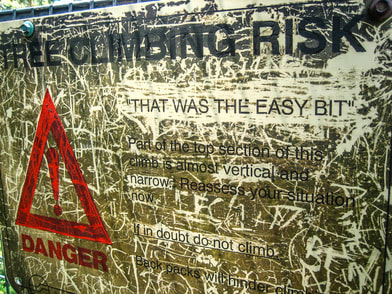
I clutch the thin poles so tight my arm muscles cramp, my toes clenched so hard you could crack a bullet between them. Higher and higher, and just when I am sure I might absolutely wet myself with fear, I reach a small wooden platform. A truly unhelpful sign reads: "That was the easy bit, mate!" Aussie Aussie Aussie, oy, oy oy…vey.
A sturdy tanned Australian fellow crawls down from above. "C'mon mate, once you're this far, you may as well go all the way to the top," he says, in that typical Australian drawl which makes any stranger seem like an army buddy. It encourages me to continue my climb, cursing ever-present Australian sticky flies, relentlessly crawling into my nostrils and ears. I reach another rest platform, and another, and then another, until at last, I am on top of the tree, dripping in sweat, staring above the dense forest in all directions. The sea casts a blue glow on the horizon. My knees are still swaying, but that might have something to do with the tree itself, dancing to a gentle ballad in the wind. In strong wind, the trunk can sway almost two metres in either direction.
Cautiously, I make my way down, wondering why they don't sell T-Shirts at the bottom. Perhaps: U2 can survive the Dave Evans Bicentennial Tree. I wonder how many people have slipped, and if the safety net did its job. I wonder who Dave Evans is, and whether he might be the unfortunate chap who can answer both questions. Assuming the latter was affirmative.
The climb takes about an hour, and trust me, it is far scarier than any tree you ever tackled in your childhood. There isn’t even an official around to call an ambulance should you drop out the sky. Although if there is, he might tell you: “it’s just a tree, mate! We have spiders bigger than this.”
Just as surely as humans have always felt an inexplicably strong desire to erect large buildings (all the way back to Babel, baby!), so a second group follow close behind with the desire to climb to the top of them. A third group wants to jump off with bungee ropes or parachutes, and we call them: lunatics. This post concerns itself with the more agreeable climbing party, including those ascending above the bronzed beach and looping canals of Gold Coast, Australia. Gold Coast (which is a city, not a coastline) is a tourist mecca in Queensland, buttressed by sandy beaches that stretch on forever. The highest building in the city is the iconic Q1 Resort and Spa Building, and the highest external building climb in the country takes place above the Q1 Observatory. Suited up in grey overalls and a safety harness, I follow my cheery guide to the elevator which bullets climbers to Level 77 in just 42.7 seconds. The Observation Deck offers 360-degre views of the city, the coastline, the information placards and snack bar. Which is why we open the Skypoint Climb door, climb up a ladder, snap in our safety caribiners, and peer down a sheer 270 metre vertical drop (truly, the last place you’d ever want to drop your phone, which is why you’re not allowed to bring cameras or phones with you). I follow my guide up the 140 stairs to the summit, sliding my safety hook along the angled rails. The breeze is brisk, the heavens blue, and the view extraordinary. Turquoise waves roll into the pretzel-coloured beach with the kind of consistency one would expect in a neighbourhood named Surfers Paradise. Behind and below me are the canals that shape the city’s character, framed by riverfront properties and boat docks. “Must be fun to swim on those canals?” I inquire. “Oh, nobody swims in the canals,” replies my guide. “Too many bull sharks.” Best we keep our pleasure dips to the ocean then, where shark nets protects bathers and surfers from sharks confusing them for something they’d actually enjoy taking a bite of. On a platform at the summit, I’m invited to lean back, trusting all my weight to the harness. You’d have to weigh as much as a bull to put pressure on the harness, so this is all completely safe, even for those afraid of heights (although the Sky Point website does say that a true acrophobic need not apply). I moonwalk. I ogle. I peer at the row of tall buildings that line the coast, and wonder why nobody thought to climb around the edge of their summits first. Probably because they don’t look nearly as striking as the Q1 Building. We return to the Observation Deck, where I learn more about Gold Coast, lifeguards, the canals, and the Great Barrier Reef. 47.7 seconds after stepping into the elevator, I’m back on the ground, popping my ears, craning my neck to see if I can spot the very top of this 325m building. Another day, and another high, ticking off The Great Global Bucket List. The SkyPoint Climb lasts around 90 minutes, open to those 12 and up with no debilitating physical conditions. This includes being drunk, which is why they breathalyser you before you go up. Climbers must wear enclosed, rubber-soled shoes (leave the flip flops at the beach). Your valuables are locked up but you can bring sunglasses and prescription eyeware with a provided attachment. Overalls and harnesses are also provided. Parking is complimentary in the Visitors Parking, and your ticket includes access to the Observation Deck. Your guide takes photo and video, which is for sale after the excursion. You can choose a Day Climb, Twilight Climb, an early morning breakfast climb, or one of several Climb and Dine Packages. For more info, visit: http://www.skypoint.com.au/
Ten years ago, I set out to backpack the world, chasing a dream of adventure and who-knows-what, with the what turning out to be a career of chasing a dream of adventure. 2015 saw my 10 year Travel Anniversary, and it was a year of candied cherries on the bucket list sundae. I’d publish three new books, all of which would become bestsellers, and at years end my first book would still be the #1 selling Canadian travel title, two years since publication. I’d successfully produce and tick-off a 10-city speaking tour from Toronto to St John’s, driving across the country with my Mom. In the time it took my daughter to become a full-tantrum two-year old toddler, I’d zip around the world (yet again), craft my life’s work, give presentations to hundreds of people in Canada, the US and Mexico, buy a drone, destroy a drone, and celebrate my good fortune with one final tattoo. I crossed the Northwest Passage for hell’s sake. Even a salty dog sailor would be proud. When I started my original blog, Modern Gonzo, it was selfishly as much for my own recollections as it was for sharing stories. This particular post follows that tradition, a brief look at the year that from a global, professional, and personal perspective. A firelight procession on New Years Eve at Sun Peaks Resort, BC JANUARY I welcome the New Year snowboarding down a mountain under the stars, holding a flare in a magical torchlight procession at Sun Peaks Resort. I was about as memorable a new years as one could hope for. In Paris, two gunmen murder 12 people at the satirical magazine Charlie Hebdo. Shockingly, this would not be the worst atrocity in Paris this year. The East Coast gets pounded with record snowfall. The West Coast is milder than hot dog mustard. Ice sculptures on the Assiniboine River, Winnipeg FEBURARY I visit Winnipeg where I tell CBC viewers that you can’t do Canada if you can’t do cold. It’s the coldest snap of the winter, but there’s always a warm welcome at the the Festival du Voyageur, Canadian Museum for Human Rights, and Assinniboine Park, where I watch a polar bear stand above my head. Is it blue and black or gold and white? RIP Leonard Nimoy, along far too many innocent victims in Syria, a country that many people felt couldn’t get any worse, until it did, and didn’t stop. Three expanded, revised regional bucket lists. MARCH I’ve begun diligently working on The Great Global Bucket List, and planning an epic summer. Meanwhile the planet’s two biggest scumbags – ISIS and Boko Haram – make bloody goo-goo eyes at each other. 20 people are murdered by terrorists at the Bardo Museum in Tunis, and ISIS start blowing up Syria’s UNESCO World Heritage Site treasures. A lunatic German pilot decides to commit suicide in the cockpit of a passenger plane, killing 150 people on board. Not a good month for tourism. I have to watch my TEDx talk again to remind myself that people will rather help than hurt you. By year-end, nearly 300,000 people would have done the same. My Mom, a Mustang, and a 10-city speaking tour APRIL A random email arrives and next thing you know CBS are flying me to New York for an interview with 60 Minutes Sports about the rise of bucket lists. The following week I’m in Saskatchewan with my brother chasing down mustard seeds and climbing up Canada’s very own Ayers Rock aka Castle Butte in the Big Muddy Badlands. The last week of the month sees my Mom and I fly into Toronto and pick up a saucy royal blue Ford Mustang. With Starwood Hotels looking after us (and by year-end, Marriott Hotels looking after Starwood), I tick off a visit to Casa Loma, surf the standing wave on the Lachine Rapids in Montreal (well attempt to anyway), and plunge in the freezing waters of the Bay of Fundy outside St John. Along the way I give talks in Indigo stores, MEC, for a packed room at World Expeditions in Ottawa, and my personal highlight, for the friendly community of Lindsay, Ontario. Meanwhile, there’s a massive 7.8 earthquake in Nepal, with over 9000 dead. Baltimore is shaking with racial tension after the first of several high profile deaths of African-Americans by police officers. Apple Watch goes on sale (wearables shmarables) and more optimistically, there’s a nuclear deal brewing with Iran and a real thawing between the US and Cuba. Footsies on the Aria Amazon, Peru MAY My speaking tour continues to Prince Edward Island, Nova Scotia and Newfoundland, and it’s wonderful to be able to show my Mom around Atlantic Canada (even if she does order tea at an Irish Bar on George St in St John’s). Back home, I get to demo Harley Davidson’s new electric motorcycle (it sounds like a Star Wars Speeder Bike) and finally bring my wife along on a mind-blowing bucket list adventure to the Peruvian Amazon on a luxury riverboat. FIFA, a corrupt excuse for a sport governing body, starts to fall apart. John Oliver, who’s weekly Youtube rants are essential, summed it up nicely. There’s a Fight of the Century in boxing, which is something of a has-been sport, with has-been boxers boring the hell out of everyone, even with a has-been scandal. Hundreds of migrants (aka refugees) drown trying to escape the quagmire of Syria, Iraq or Sudan. Even as the Conservatives stay in power in the UK, Ireland legalizes gay marriage. Hiking bliss in Ivvavik National Park, Yukon JUNE We didn’t have much of a winter in Vancouver, but it’s sure sweet to see summer. Back from Peru, I pack for a week of hiking and camping 200 km north of the Arctic Circle in beautiful Ivvavik National Park (more people visit Everest Base Camp each year). I also spend a few days in the Western Arctic capital of Inuvik, a frontier town built on permafrost. Showing just how far it has come (despite the Bible-thumping lunatics), the US Supreme Court votes 5-4 in favour of gay marriage. Everyone’s Facebook profile pic gets attacked by rainbows. But it’s not all love and unicorns. Mass shootings in the US continue to shock, the latest (in a Charleston church by a white supremacist) at least serving to finally force the removal of the Confederate Flag (a not-so-secret white supremacist symbol) from government buildings. After missing a debt payment, the Greek economy collapses, again. More tourists are murdered by Islamic fundamentalists in Tunisia, this time on the beach. North America is far more concerned with the fate of Jon Snow (no way he’s dead!?) and a freakshow limelight-addicted reality star changing gender. The FIFA (yuck) Women’s World Cup (yay!) kicks off in stadiums across Canada. Stuff you see in the Galapagos JULY I was a little nervous to visit the Galapagos. How could it possibly live up to the expectations? Well, it did, and then some. Sailing on a luxury catamaran, snorkelling with sea lions, turtles, penguins and marine iguanas, hiking on lava – Darwin’s islands quickly became a highlight in my Global book. The US and Cuba announce full diplomatic relations. Cuba is going to change fast, and that’s not a bad thing at all. Japan didn't stand a chance in the Women’s World Cup Final, but the country does legalize military participation in foreign conflicts for the first time since World War II. For a better handle on geo-politics, this year I turned to podcasts, in particular Intelligence Squared and Dan Carlin’s Common Sense. The world goes gaga for our first glimpses of the ex-planet Pluto. It looks nice, but I wouldn’t want to live there. A douchebag dentist kills a famous lion in Zimbabwe and gets a mouthful of hate on social media. China’s stock market starts to teeter but Vancouver real estate prices respond like a honeybadger (just.don’t.care). Best viral clip of the month has champion surfer Mick Fanning tangling with a shark (and somehow keeping all his toes). More mass shootings in America (cut and paste this line for every month). On the way to board One Ocean Expedition's Vavilov off the coast of Greenland AUGUST Two days before an epic cruise to the Arctic with One Oceans Expeditions, I get a call that sea-ice has trapped the ship and the trip is cancelled. (Tears). Instead, do I want to attempt the Northwest Passage as Writer-in-Residence? (Of. Joy). An unbelievable adventure from Greenland to Baffin Island and following the footsteps of Franklin caps the highlight chapter for my Northern Canada Bucket List. Bonus: that’s me toasting life in a hot tub with icebergs in the background in stories written by Science Editor (and Scotch tutor) Robin McKie for the UK Observer and the Guardian. Although I was on the same boat in Antarctica last December (joined again by the intrepid photographer Jeff Topham) it’s a completely different polar adventure. Having less of a maritime adventure are the hundreds of thousands of desperate refugees trying to cross the Mediterranean to the relative safety of Europe. It’s now the biggest refugee crisis since World War II. How different countries react to the crisis range from inspirational (Germany, and later Canada) to horrifying (Hungary, the Arab states). Also horrifying: ISIS blow up Palmyra, the most famous historical site in Syria. Also horrifying: Donald Trump leads the polls as the front runner for the Republican presidential nomination. The more misogynistic, bigoted, ignorant and frightening his remarks, the more light shines on the dark, scary shadow of the United States. It’s not the best time for Jon Stewart to retire, but he does, choosing young South African comedian Trevor Noah to replace him. In Canada, tension rises for the upcoming election, with the NDP running neck and neck with the Conservative Party. My daughter Raquel loving life at Echo Valley Ranch, BC SEPTEMBER Let no one tell you that writing a book isn’t a lot of work. My Great Global Bucket List is a monster, so much so that I have to cut 17 chapters for space! And this month is my deadline for both the Northern and Prairie Bucket Lists too. Why write one book when you can write three? Between long writing days, I take my family to a magical place called the Echo Valley Ranch in the BC interior. For a year that includes the Amazon and Galapagos and Greenland, I fondly recall Echo Valley way more than I expected to. Beside the wingnuts lined up at the mall, who gives a crap about the new iPhone when dead kids are washing up on beaches? The world is shocked when the media publishes an image of a drowned toddler washed ashore in Turkey. The refugee crisis is truly staggering: over a million people braving terrible conditions and risks to get away from monsters, some of them arriving to find monsters trumping all over them on arrival. Meanwhile, thousands die in a stampede during the annual Hajj in Saudi Arabia, and Russia starts bombing ISIS and US-backed opposition forces in Syria. Because that’s what the region needs: the possibility of igniting World War III. Volkswagen is revealed to have been cheating omissions tests with software, one of the largest cases of industrial fraud ever. At least they owned up to it. What the hell happened to the NDP? All of a sudden, strategic voting is elevating the Liberals to the neck-and-neck title. Canadian politics may be civil, but this is turning out to be an interesting election that could change the future of the country. Showing off my maritime tattoo at the Vancouver Maritime Museum gala OCTOBER It crunch time for deadlines. When you work by yourself, there’s no office mates to high five when you file a 120,000 word manuscript. Or nail a keynote at a conference on the Mayan Riviera in Mexico, or on stage in Tacoma, or for the BC tourism industry annual gathering. I’m high fiving myself all over the place. On October 19, Canada goes to the polls. I vote on the way to dropping off my daughter at daycare. That afternoon I visit a tattoo artist in Strathcona to permanently ink a reminder of the year’s incredible adventures. If I don’t, I simply would not believe all these adventures had taken place at all. By the time I return home after my five hour sitting, Justin Trudeau and the Liberals have somehow swept to a majority government. It’s the dawning of a new Canada, one that I believe is far more recognizable and in-line with the values of its people. The Conservatives campaigned on fear, the Liberals on hope. By the end of the month, you could taste the optimism in the air. Trudeau appointed a gender-equal cabinet. Trudeau reversed policy decisions on refugees, on climate change, on austerity. The last time I lived through a political honeymoon like this was when Nelson Mandela became president of South Africa. Two decades later, South African politics is in a sorry mess (#zumamustfall), but there’s no denying the “moment” while it lasts. On the world stage, Canada is back. #becauseits2015. A bomb explodes on a Russian commercial jet with 225 passengers shortly after take-off in Egypt. Putin says there will be blood, and promptly starts dropping bombs on innocent Syrian civilians. 32 people die in a Romanian nightclub fight. October 21 is the actual day Marty McFly arrives in the future in Back to the Future II. Our hoverboards have wheels. Our laces still don’t tie themselves. Damn Marty, the future ain’t what it used to be. Diving off Lizard Island, Australia NOVEMBER No offence November, but you’ve always been the worst month of the Northern Hemisphere year. Winter starts biting, but the festivities of December have yet to begin. And it doesn’t help that it rains, and gets dark at 3pm, and everyone starts coming down with year-end fatigue. Fortunately, there’s always a trip to Tropical North Queensland to dive Australia’s Great Barrier Reef. It was a last minute chapter in the book and an opportunity to tick off one of the world’s great natural wonders. I was driving in rental car in Gold Coast, tuned into local radio, and first heard about the massacre in Paris. The news stopped all of us in our tracks. We all know Paris (or of it). We know what it’s like to go to a concert, or chat in a coffee shop. Each attack makes us angrier, and that anger translates into action, and unfortunately, more fear of the other. It’s exactly what these rectal slimebags want. More hatred, more fear, more terror. More yahoo cowboys with bazookas in kindergartens. A religious civil war is sucking the world into its fundamentalist vortex, Allah help us. Turkey shoots down a Russian fighter jet and the old claws of NATO and the Warsaw Pact get sharpened. At least Taiwan and China seem to be moving in the right direction, with the first formal meeting of its leaders. And Aung San Suu Kyi appears to be having her Mandela moment in Burma aka Myanmar. Adele’s new album smashes records in its opening week. It’s full of heartbreak, aching and longing. Canadian lunch at US Tour Operators Conference, Chicago DECEMBER I kicked off December with a visit to Chicago to talk about the wonders of Canada to a room of US tour operators. Even more memorable than strolling beneath the Xmas lights on the Magnificent Mile was the fact that, for the first time in my life, I showed up at the airport without my passport. Yep, true story. I hopped into a cab, and with a sympathetic driver (who turned out to be a fan), pushed the limits of a Prius to somehow get home and back to the airport, through customs and security, before the plane took off. Now that was magnificent. For all the bad news in the world (another mass shooting in the US, and another) there was also optimism. For the first time, the world’s nations came together to agree on a plan to move away from fossil fuels. Implementation will be nigh on impossible, but at least there’s a global political consensus that the weather is changing, and unusual droughts, floods, storms and temperatures are not a good thing. 2015 is the hottest year recorded since records began in 1880. For all our current geo-political turmoil, at least we’re not living 12,800 years ago. A fascinating talk (and new book) by one of my favourite authors Graham Hancock convincingly suggests that impending comet strikes sent us back to the Stone Age. And probably will do so again. Oh well, one more reason to start ticking off that bucket list sooner than later. Some of the better books I read: Sapiens by Yuval Noah Harari; The Martian by Andy Weir; The Night Circus by Erin Morgenstern; Tibetan Peach Pie by Tom Robbins; The Girl who Saved the King of Sweden by Jonas Jonassen; The Sixth Extinction by Elizabeth Kolbert; One More Thing by BJ Novak and Magicians of the Gods by Graham Hancock. Some of the better movies and TV shows I saw: Game of Thrones; The Martian; Mad Max Fury Road; Ex Machina; Inside Out; Sicario; The Jinx; Narcos. Of course, there’s a lot I didn’t see, and regrettably. all the superhero stuff just sort of blended into one explosion. It was a weird year for music. Normally I run through critics list and hunt new tunes and bands with impressive tenacity. This year I just didn’t get it. Everything sounded so…derivative. I must really be getting old. Some of the better songs I listened to (whether they were released in 2015 I’m not sure): 10,000 Emerald Pools by Borns; Every Other Freckle by Alt-J; Kill vs Maim/Flesh without Blood by Grimes; Generate/Mirage by Eric Prydz; Anna Sun by Walk the Moon; Kygo remixes; Trojans by Atlas Genius; Science-Visions by Chvrches; Flash Junk Mind by Milky Chance.
“Robin Ayers Rock?” “Esrock.” “I’m sorry, did you say Ayers Rock?” “No, E-S. Rock.” My grandmother once told me how people from Australia thought she was joking when she gave her surname. It never struck me how similar Esrock is to Ayers Rock, but throw in a few accents here and there, and no wonder locals this week raised an eyebrow. It was something I got used to pretty quick during my visit to Australia, along with the fact that you don’t have to tip, and fast food joints charge you for ketchup pouches. After the comfortable flight into Brisbane via Auckland on Air New Zealand, well deserved of airlineratings.com Airline of the Year Award, I breathe the warm, tropical coastal air of northern Queensland on my patio at the Thala Beach Resort. Humidity hugs me as I gaze out over the forest canopy and picturesque bay, listening to the songs of birds and frogs. Parrots flutter about in the trees adjacent to the windowless dining room, with the natural assets of tropical north Queensland on full display. My first introduction to the Great Barrier Reef is on Quicksilver’s wave-piercing catamaran, which delivers tourists to a permanent pontoon on the outer barrier reef. Beyond snorkelling, I soak up the time in a semi-submersible boat ride, an underwater observatory, in the skies with a helicopter ride (the view is extraordinary) and my personal highlight - on an underwater platform with a fish-bowl like helmet on my head, petting a friendly and unnervingly large Maori wrasse. Well, that’s one way to experience the reef. Another is by sea kayak, launched the following day from Thala Beach in the early morning hours. Sea turtles pop their heads out the water to see what the fuss is about, but I’m more distracted by the lush costal mountains framing the coastline. Back to Cairns, which serves as the gateway to the northern barrier reef, I hop on a small plane for an hour-long flight to Lizard Island National Park. Home to an important marine research station, Lizard Island also has glitziest resort on the reef, with 48 luxurious villas facing a turquoise bay and white sandy beaches. Re-opened after two cyclones caused havoc, the resort is the epitome of elegance – white walls, wooden boardwalks, palm trees, an azure pool, fine dining and spa. It’s also on many a diver’s bucket list, especially the Cod Hole, where giant potato cod swim with curious sharks and technicolour fish on the outer reef. It’s my first scuba dive in some time, and as I descend beneath the surface, surrounded by hundreds of barracuda, I’m reminded of previous visits into the weightless underwater wonderland of ocean diving. I chase reef sharks, stare into the eyes of the giant cod, navigate reef canyons. “Damn!” I exclaim back on the dive boat. “The Great Barrier Reef delivers!” A raucous farewell party on the beach (maintaining my perfect record of skinny dipping in warm oceans at night under the stars), fly to Cairns, fly to Gold Coast, climb a building, storm watch from the 27th floor balcony of the stylish Peppers Broadbeach, and I’m in the co-pilot chair on the 10-seater plane to the most southerly resort island on the barrier reef – Lady Elliot Island. Renowned for the manta rays and turtles that visit the island home year-round, Lady Elliot is the most accessible reef island for Australia’s southern capitals, popular with families, divers, weekenders and daytrippers. I pick up snorkel gear at the dive shop, take a few steps from my cabin into the lagoon, and the reef explodes with life and colour. The small, coral cay island is surrounded by reef, and with excellent visibility, regarded as one of its best dive and snorkel spots. I submerge through the Blue Hole, an underwater tunnel that opens up into marine world beaming with life. Look at the size of that white tipped reef shark! Hello Mr Curious Turtle! Check out the grace of that manta ray! With just one opportunity to dive, I’m deeply jealous of the divers who are here for a week, but grateful to have the opportunity to be here in the first place. Still, snorkelling from the Coral Garden to the Lighthouse is so rich with turtles, coral, fish and manta rays that anyone can enjoy the reef, no scuba certification necessary. The Great Barrier Reef is not only one of the world’s natural wonders, it’s one of the world’s most popular tourist destinations. It’s also surprisingly accessible for a wide range of budgets, and as you can read above, offers a wide range of experiences, some that even allow you go underwater and keep your hair dry. Accommodation and meals are uniformly outstanding, the weather reliably co-operative (even when it rains or is overcast, the reef is open for business!), and the locals famously cheery. Even if your surname sounds like a prank call, that’s something every visitor can appreciate. Find out more information about visiting Australia and the Great Barrier Reef.
Lizard Island here I come! I recently did an interview with CAA Magazine and was asked what's at the top of my bucket list? It's a question I really should expect, being the author of bucket list books. And yet... I stopped actively pursuing my bucket list some years ago, when I accepted that I'd done everything I'd ever imagined (and then some), and bucket list experiences that continue to pop up are icing on the cherry sundae. Although, to be fair, there has always been the Great Barrier Reef along the East Coast of Australia. After Sydney's Opera House, it is the most popular tourist attraction in the country, and one I narrowly missed years ago when I veered south towards Tasmania instead. That was before I started diving, and we are talking about the world's largest coral reef, a rich eco-system known as one the world's great natural wonders. Plus, I've heard great things about the cities of Gold Coast and Cairns, so the attraction is not all underwater either. Knock on the door of the universe, and sometimes it answers. For a limited time, Air New Zealand is offering an economy rate of just $1,575 from Vancouver to 7 major Australian gateways, including Sydney, Melbourne, Brisbane, Sunshine Coast and, you guessed it, Cairns. Together with Tourism Australia, they asked if I'd help them promote both the fare and the wonders of Australia. Since Air New Zealand is one of my favourite airlines and Cairns is a gateway to the bucket list of barrier reefs, I dinkum thought about it for sixty six seconds, which is how long it took me to locate my PADI dive certificate. Scuba is just one aspect of it, however. How does one take on a 344,400 km2 marine park with 600 offshore islands, 1500 species of fish, 134 species of shark and rays and 150 inshore mangrove islands? There are countless experiences to be had, but what belongs on the bucket list? A wave-piercing catamaran? A luxury reef escape? A micro-brew on the busy beaches of Gold Coast? My journey will touchdown in Auckland via LA before continuing onto Brisbane and Cairns. True story: The last time I flew AirNZ was the first and only time I've been upgraded to a business class flatbed seat on a long haul. Unfortunately, my travelling companion was not so fortunate, and since we were dating, I made the ultimate romantic gesture. I took the business class seat. Air NZ's Economy Skycouch Just kidding! I declined the upgrade and spent 12 hours in the company of a beautiful lady who would later agree to marry me. Not quite as cool a story as finding your doppelgänger seated next to you, but flights can still change your life. This time I'll be on my own, so I hope my wife doesn't mind me cuddling up to a fellow passenger on Air New Zealand's nifty Economy Skycouch. Right on AirNZ. Seating innovations are too few and far between, especially for those of us in Economy. The All Blacks recently nipped the Wallabies in the World Cup Rugby Final bud, but it's inspiring to see how these two beautiful countries work and play together, including their airlines. Next post will be about my adventures down under. There might be an encounter with a giant potato cod, and hopefully, a shark or two. The Barrier Reef, and the bucket list, awaits. Find out about Air New Zealand's Australian gateway deal here. For more information about Australia's Great Barrier Reef, visit their official site.
Glamping, short form for glamorous camping, promises all the rugged adventure of the outdoors, with the velvet luxury touch of high-end comfort. A growing trend in the world of modern travel, here’s my first round of picks from Canada and around the world: Lets kick off on Vancouver Island’s Clayoquot Wilderness Resort (pictured above), which offers 20 luxury tents, connected by cedar boardwalk under a rainforest canopy. Each tent has antique furniture, thick rugs, wood stoves, and a shower house, blending opulence and wilderness at the mouth of the Bedwell River. It was a stormy, cold night when I arrived at Rockwater Secret Cove, so I appreciated the heated slate floors, glowing fireplace, terry cloth robes and hydrotherapy soaker tub. All the more so because I was staying in a tent, and these are not things one normally associates with tent accommodation. Located on the Sunshine Coast, Rockwater’s tent accommodations sit off a wooden boardwalk , illuminated at night like a runway, with beautiful views of the Malaspina Strait. Le Camp, France Located in the countryside of southwestern France, Le Camp offers six two-bedroom luxury canvas tents, and private yurts located deep in the woodland. Each tent looks out over the countryside, and comes with handmade beds, solar lighting, composting toilets, and an indoor/outdoor shower. Private luxury for couples, or big enough to accommodate whole families, Le Camp has space to roam, explore or relax. You will however have to share the 20m natural swimming pool. Your company: butterflies, dragonflies and frogs. Spicers Canopy, Australia An hour and half from Brisbane, Splicers Canopy offers glampers a back-to-nature experience atop a plateau, and an 8000-acre private reserve. Accommodating 20 guests, each tent has king size beds with fine linen, polished floorboards, luxurious armchairs and covered deck. Gourmet meals are included, as are guided walkabouts into the Main Range National Park. Dining is communal, taking places around a large stone fireplace, under stars sparkling above the clear air of the plateau. Three Camel Lodge, Mongolia Perhaps the most exotic destination for today's glamper, the Three Camel Lodge is an environmentally sustainable development built in Mongolia’s Gobi Desert. Accommodation comes in the form of luxury gers, the traditional circular tents used by Mongolian nomads. Felt and canvas cover a wooden frame that can be dismantled easily, with a wood stove keeping everyone warm in the middle. Three Camel’s gers have handpainted furniture, a private bathroom, king size beds, and Mongolian style bathrobes and slippers. The lodge features a restaurant, and Dino House, built in the style of a traditional temple, for evening entertainment.
I’m standing on a gravel airstrip on the north of Somerset Island, permanent population zero. During the summer months, tourists visit an amazing eco-lodge called Arctic Watch, watching thousands of Beluga whales, swimming in crystal waterfalls, and hiking in the tundra. As we waited for our charter return flight to arrive, with supplies and a new arrival of guests, the weather closed in. Keeping an eye out for polar bears, it got me thinking about other remote landing strips, and in particular airports. Pilots can land a plane on any dirt strip, but a commercial airport requires infrastructure, a yellowing bathroom, maybe a broken vending machine. Military airports need not apply. Here’s some of the world’s most remote, along with some of my own adventures discovering them. Resolute Bay Airport, Nunavut Airport Code: YRB Since we’re in the North, lets start with the closest airport to my landing strip on Somerset Island, in this case, Resolute. It’s the second most northerly community in Canada, population around 240. The Inuktitut word for Resolute literally means “place without dawn.” Midnight sun in summer, Arctic night in winter, and the sun never rises either way. The airport receives regular flights from First Air as well as charter planes, and plans are afoot for the Canadian Military to expand the airport to make it a major Arctic centre for its operations. In the meantime, the community gratefully receives its supplies, and lifeline, from planes landing at its simple airport. Perth International, Australia Airport Code: PER It’s the fourth busiest airport in Australia, serving the capital of Western Australia with a population of 1.75 million. So how does Perth International feature on this list of outposts? After all, it services 37 airlines flying to 77 destinations, and over a thousand flights a week! The answer is simple: Perth is arguably the most isolated city in the world, closer to Jakarta than it is to Sydney (there are arguments that Honolulu is more isolated, in which case, we should add Honolulu International HNL to this list). Sure, it’s far from everything, but it also boasts sensational beaches, Australia’s wine growing region, and a wonderful quality of life. Bahir Dar Ethiopia Airport Code: BJR Admittedly, Bahir Dar is not one of the world’s most remote airports, but trust me, it’s the last place on earth you’d ever want to end up. OK, I’m being a bit harsh, but I did spend 8 hours there, and you probably did not. What happened was our Ethiopian Airways flight from Addis Ababa to Lalibela stopped off in Bahir Dar as per schedule. We took off again, flew ten minutes over Lake Tana, and the pilot announced engine troubles. Not a good thing to hear, so I was somewhat relieved when we landed safely back at Bahir Dar. Four sweltering hours later, during which time I counted every cracking tile in the airport wall, the replacement plane arrived. Problem is, it had broken down too. So we waited another four hours for the replacement replacement plane. We arrived 10 hours late, nerves frazzled, but thankfully, in one piece. And that’s all we can really ask for, right? Kulusuk Airport, Greenland Airport Code: KUS Another isolated northern airport, this time on the east coast of Greenland. Since everyone knows Greenland is far icier than Iceland (which services the airport), it’s rather disturbing to note the airport doesn’t have de-icing equipment. The terminal does have a duty free shop, a small cafeteria, and considering there are only 3 to 5 flights a day, a reputation for being chaos in the arrivals/departure hall. Kulusuk is the gateway to Ammassalik, a remote region that does receive a fair share of tourists chasing Arctic adventures. Atiu, Cook Islands Airport Code: AIU The Cook Islands are made up of 15 islands, covering a whopping 1.8 million square kilometres of Pacific Ocean. Tourists might visit a couple inhabited islands, and the views of the turquoise lagoons are simple staggering. On Atiu, I got dirty in an ancient burial cave, joined in a local birthday party, and had a great time in a traditional bush pub, sharing homemade orange moonshine out of a coconut cup with a dozen locals. When it was time to fly back to Rarotonga, the friendliness of this tiny island (population 560) was literally on display at the airport. A sign above the waiting hut read: “Voluntary Security Check: Would passengers please hand in their AK47’s, bazookas, grenades, explosives, and nukes to the pilot on boarding the aircraft. Airport Management thanks you for your cooperation. “ Petropavlovsk-Kamchatsky Airport, Russia Airport Code: PKC In the world of highly remote eco-adventures, the Russian peninsula of Kamchatka is making waves with its lunar landscape, snowcapped mountain peaks and volcanoes. Since there are no roads or rail connecting the region to the mainland, the airport is the lifeline for the region’s main town, Petropavlovsk-Kamchatsky. Seasonal flights are bringing tourists in from the USA, Japan, China and Moscow. The peninsula is also home to Russia’s largest submarine base, and while isolated, has a population of 180,000. Moscow is just a nine-hour flight away! Mataveri International Airport, Easter Island, Chile Airport Code: IPC Widely regarded as the world’s most remote airport, Mataveri is 3759 kilometres away from the nearest airport, in Santiago, Chile. For all its isolation, the airport does do brisk traffic, thanks to tourists arriving from Santiago, Tahiti and Lima primarily to see the famed stone heads that mysteriously guard the island. Easter Island is perhaps the world’s most remote inhabited island, so stands to reason its airport makes the list. With an asphalt runway serving 737’s, the airport was also an abort site during the space shuttle program. St Helena Airport, British Overseas Territory Airport Code: TBA When construction is complete, the South Atlantic island of St Helena will boast one of the world’s most remote civilian airports, more than 2000 kilometres from the nearest landmass. The island is actually the centre of three British Overseas Territories, which are easily accessible should you happen to own a superpowered submarine. Ascension Island is only 1,300 kilometres north, while Tristan da Cunha is 2,400 kilometres south. Some 4255 people live on St Helena, with all food, equipment and supplies arriving by boat, which is expected to be retired in 2016 when the airport is complete.
|
Greetings.
Please come in. Mahalo for removing your shoes. After many years running a behemoth of a blog called Modern Gonzo, I've decided to a: publish a book or eight, and b: make my stories more digestible, relevant, and deserving of your battered attention. Here you will find some of my adventures to over 100 countries, travel tips and advice, rantings, ravings, commentary, observations and ongoing adventures. Previously...
March 2024
Categories
All
|

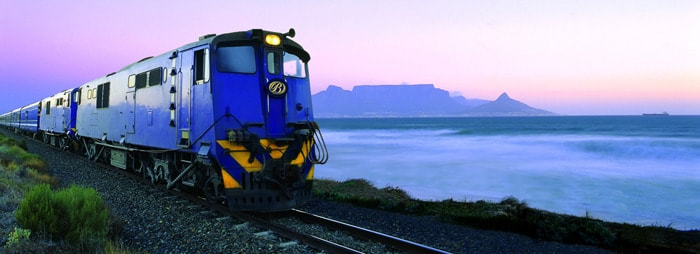


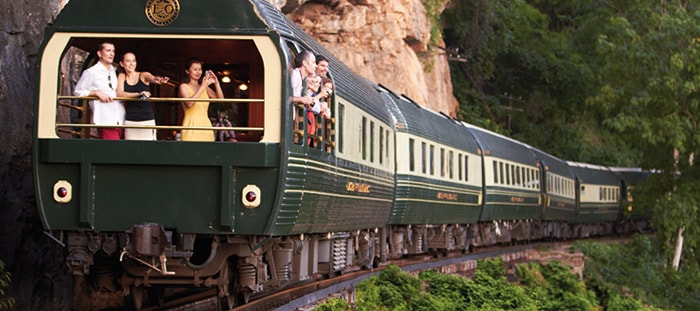


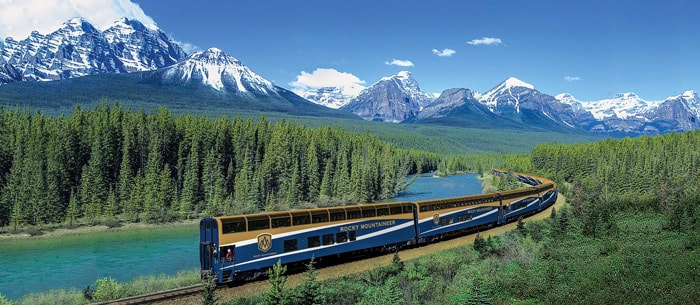
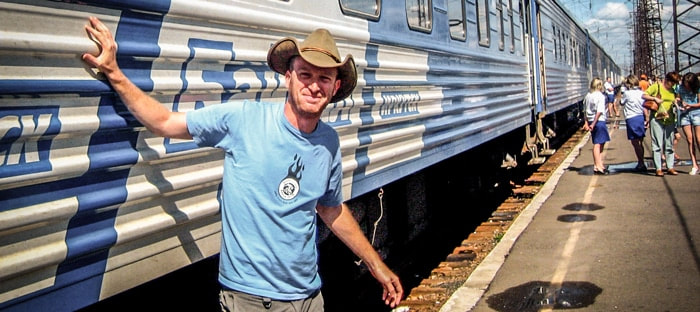

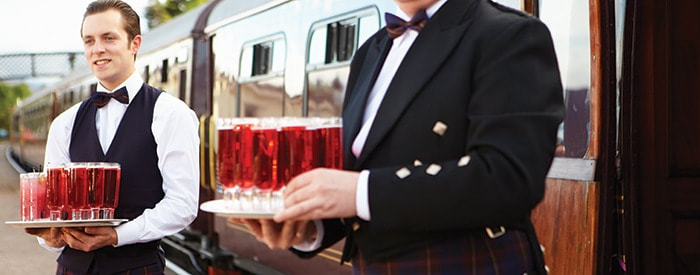
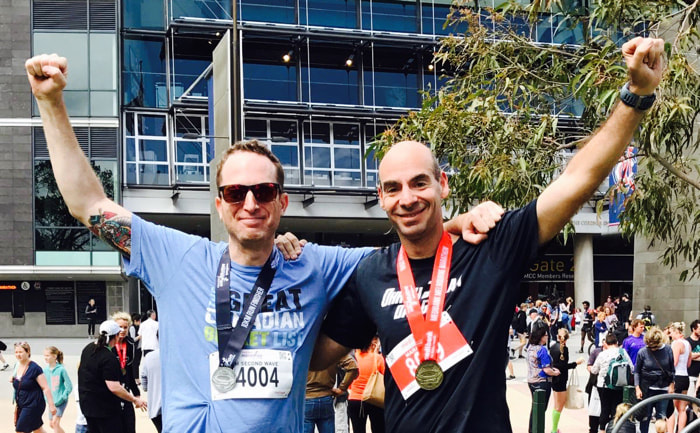
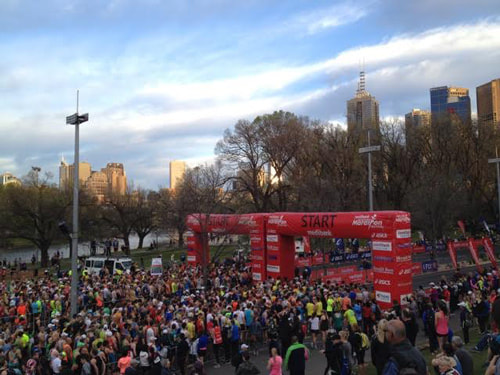
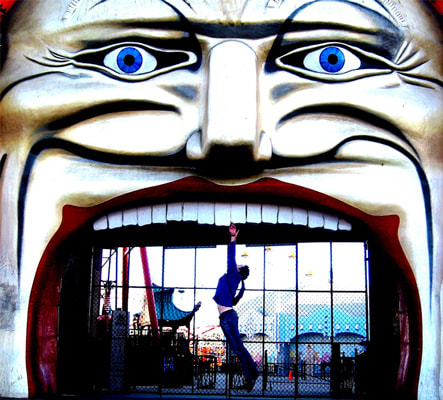
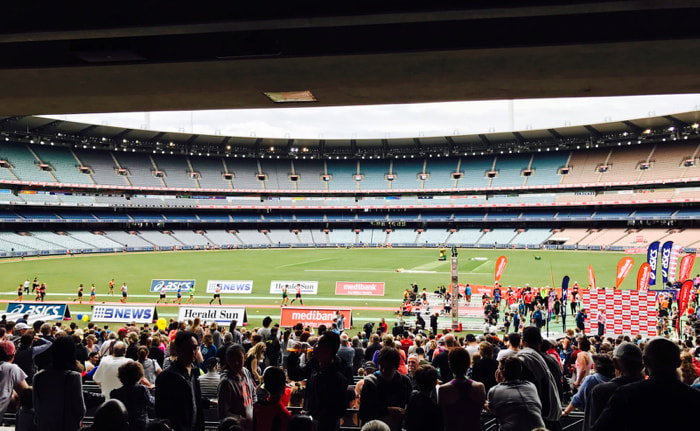
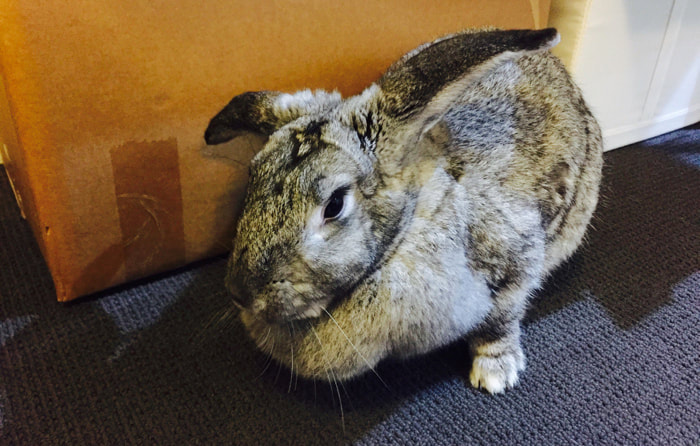
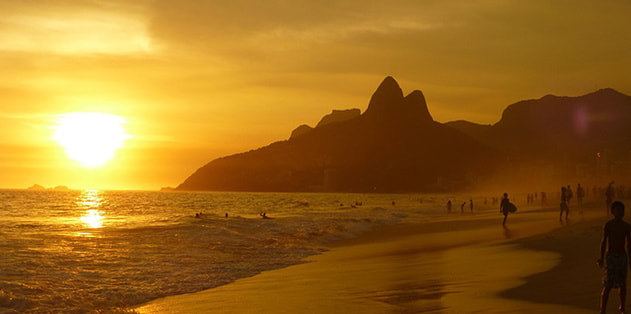
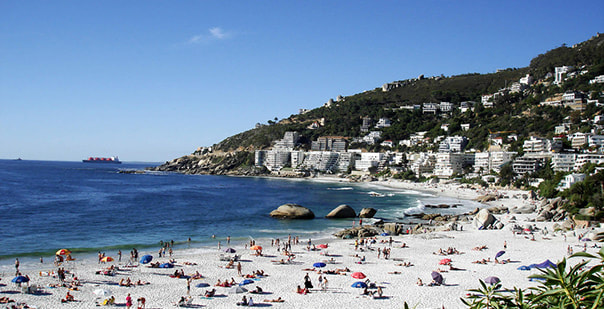
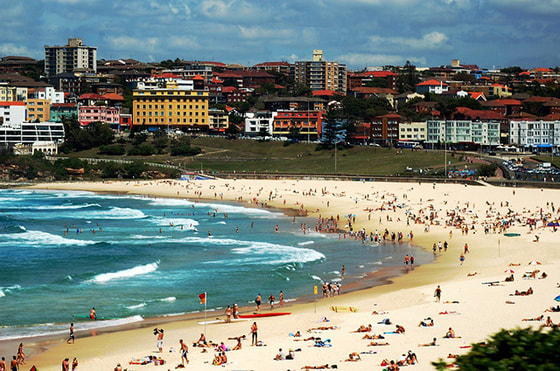
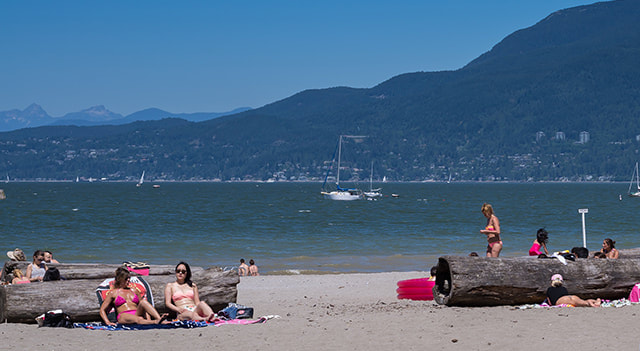

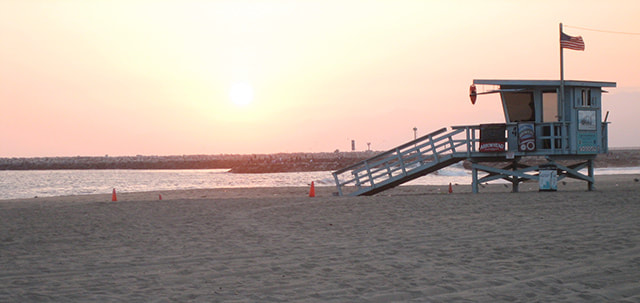
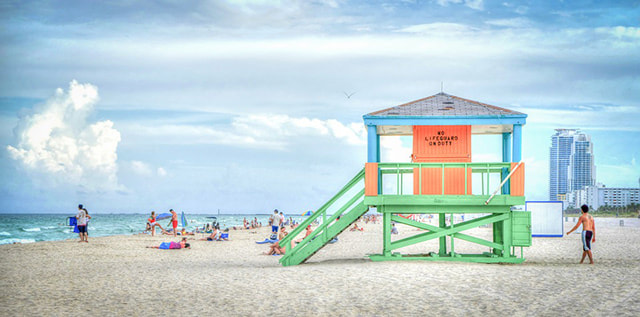
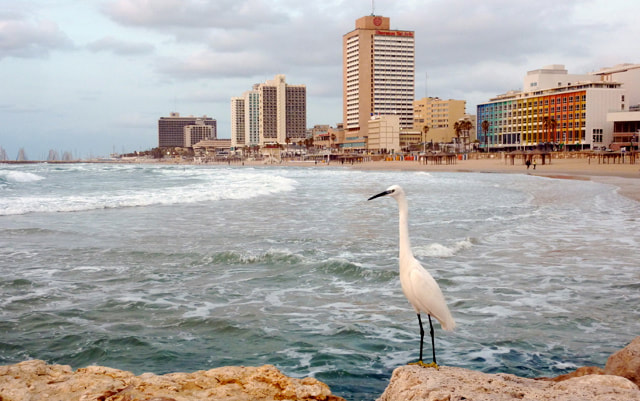
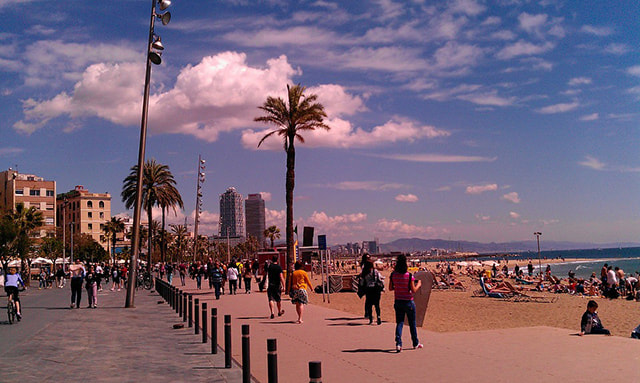
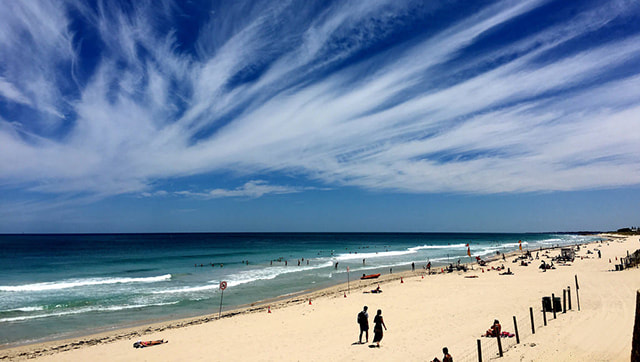
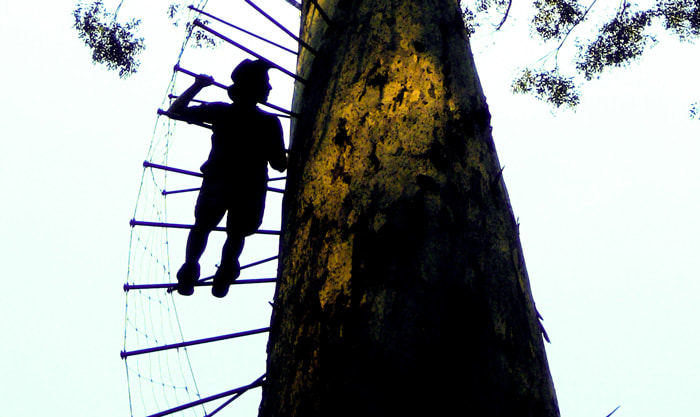
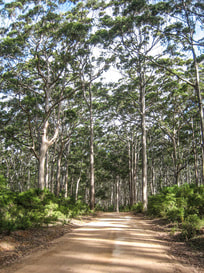

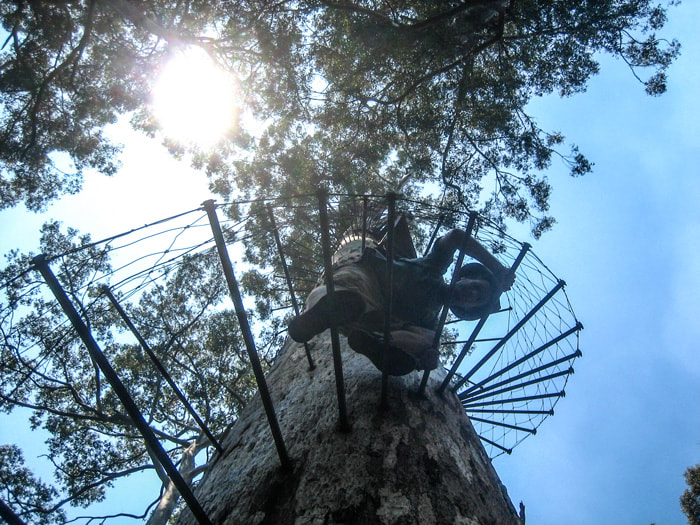
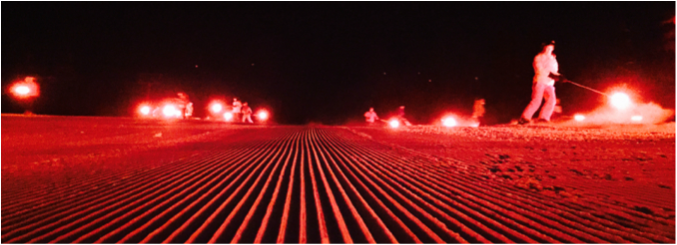
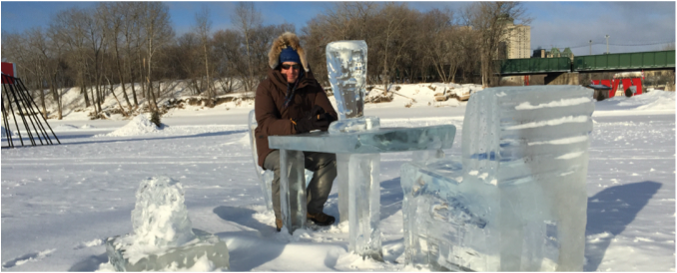
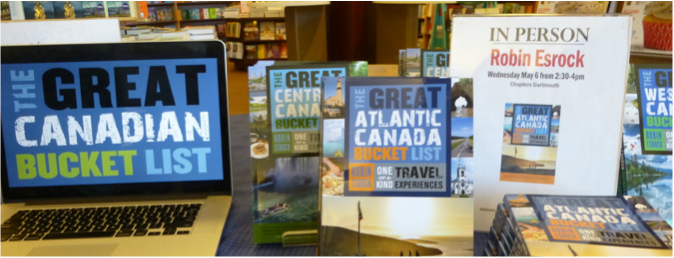
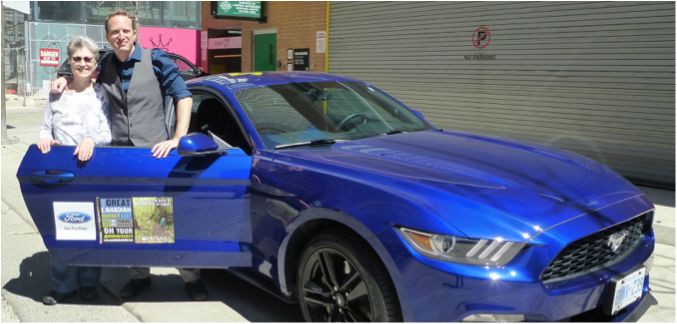
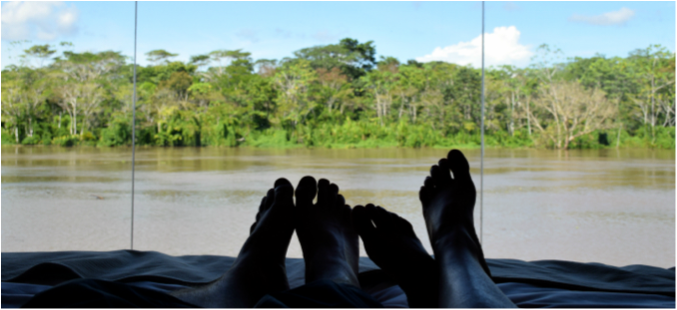
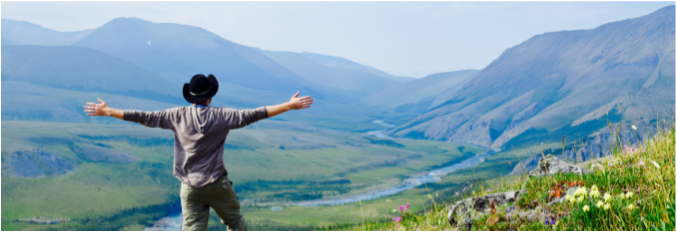
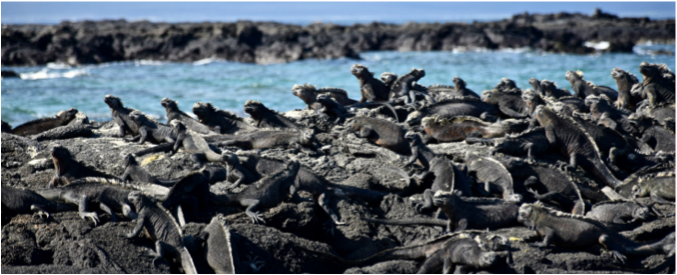
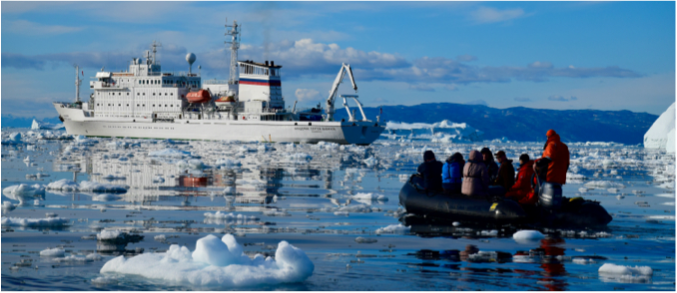
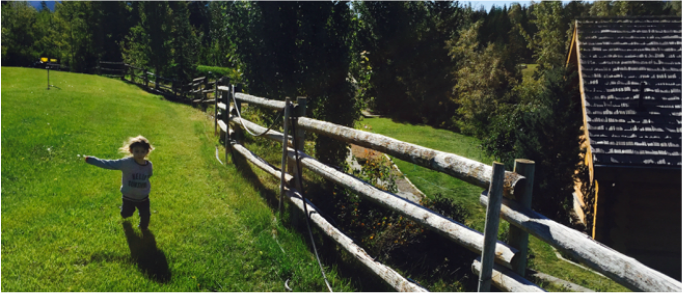
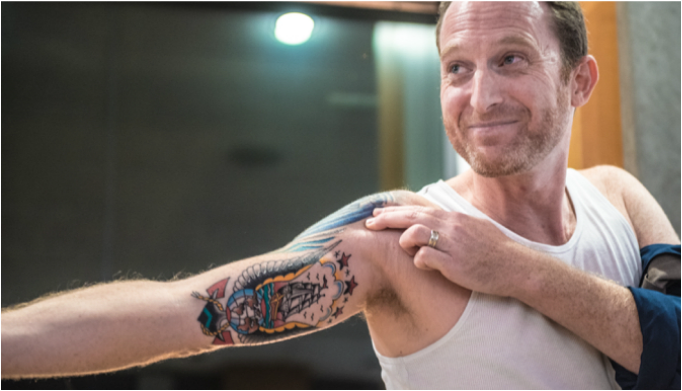
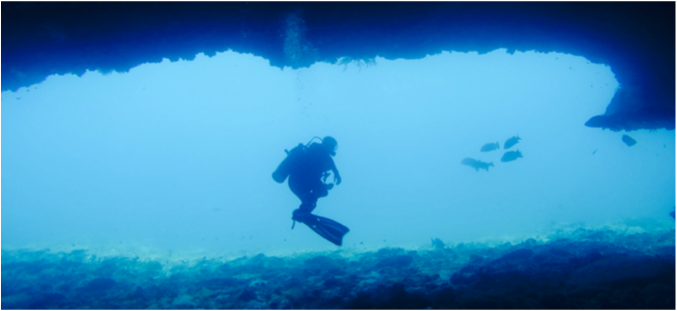
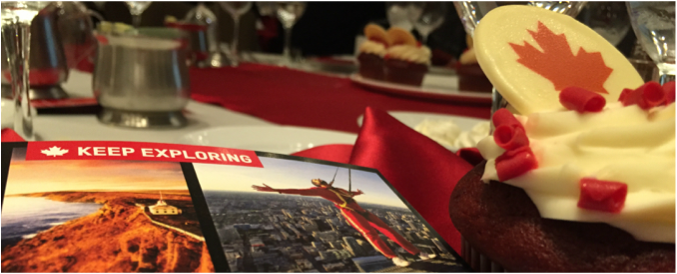
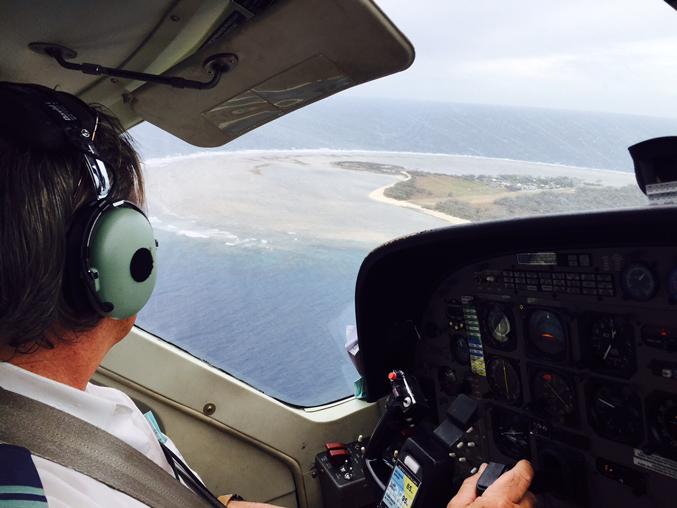
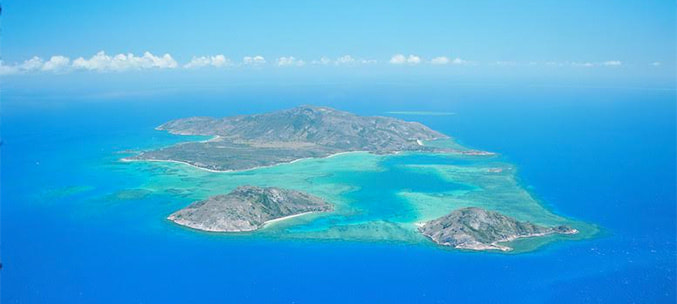
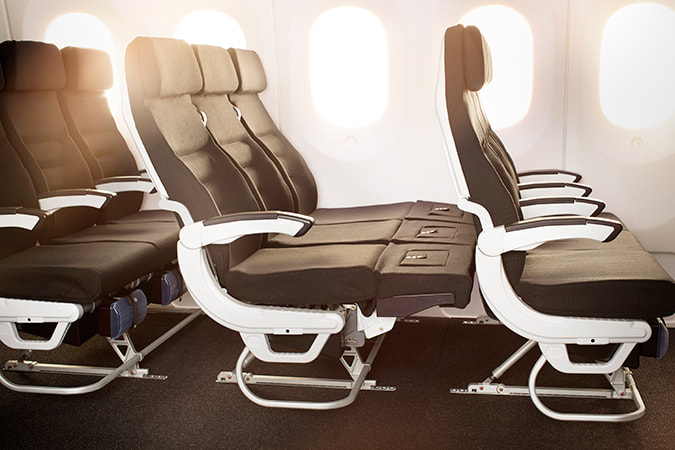
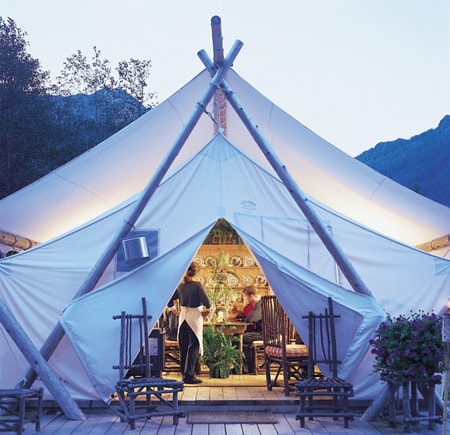
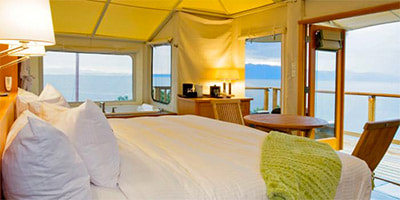
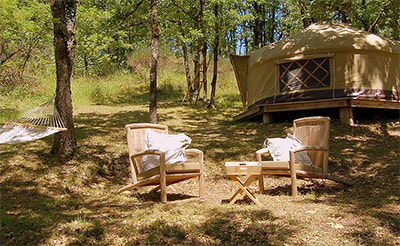
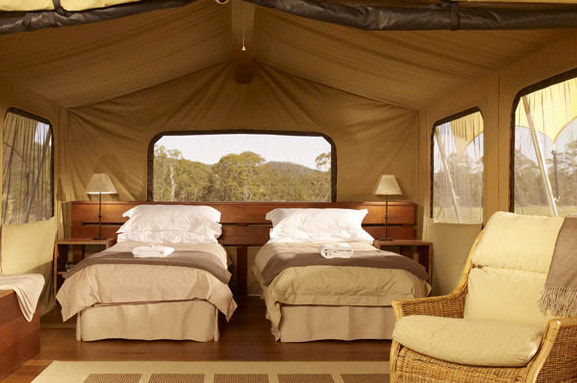
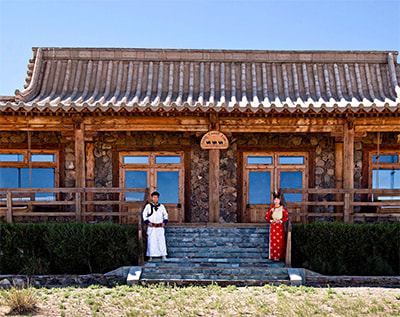
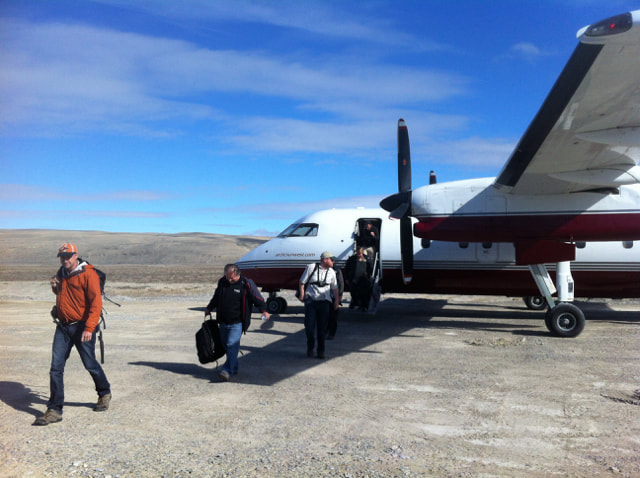
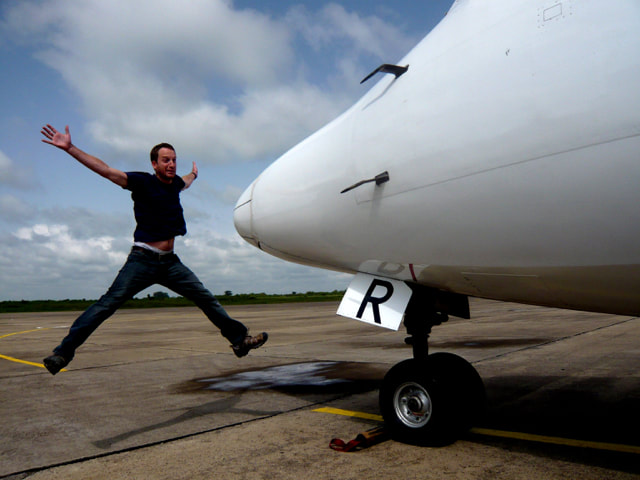
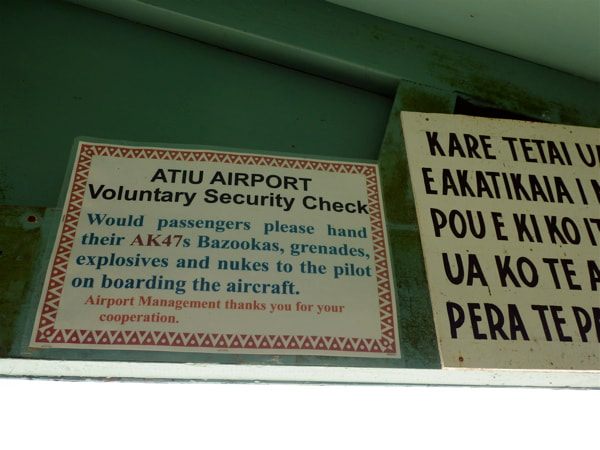
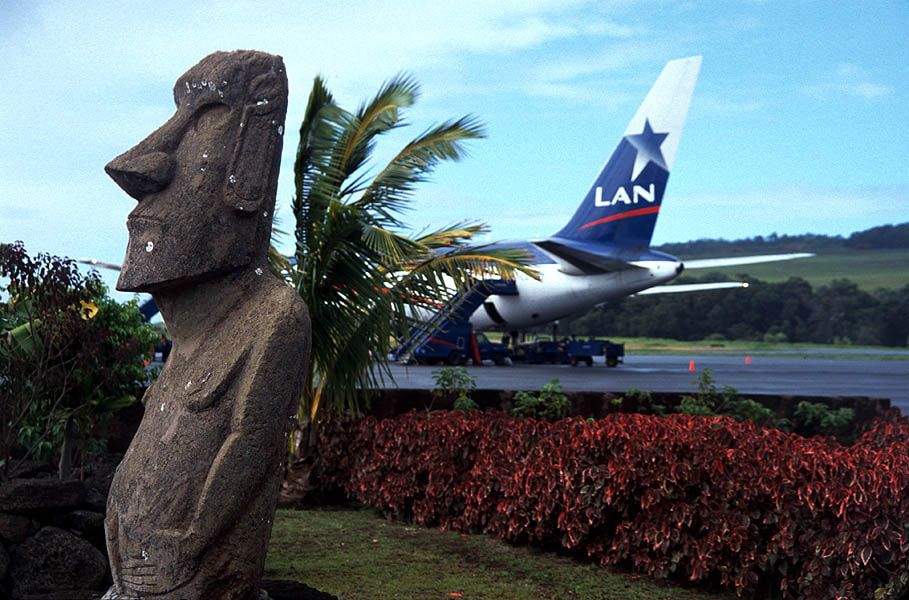
 RSS Feed
RSS Feed

